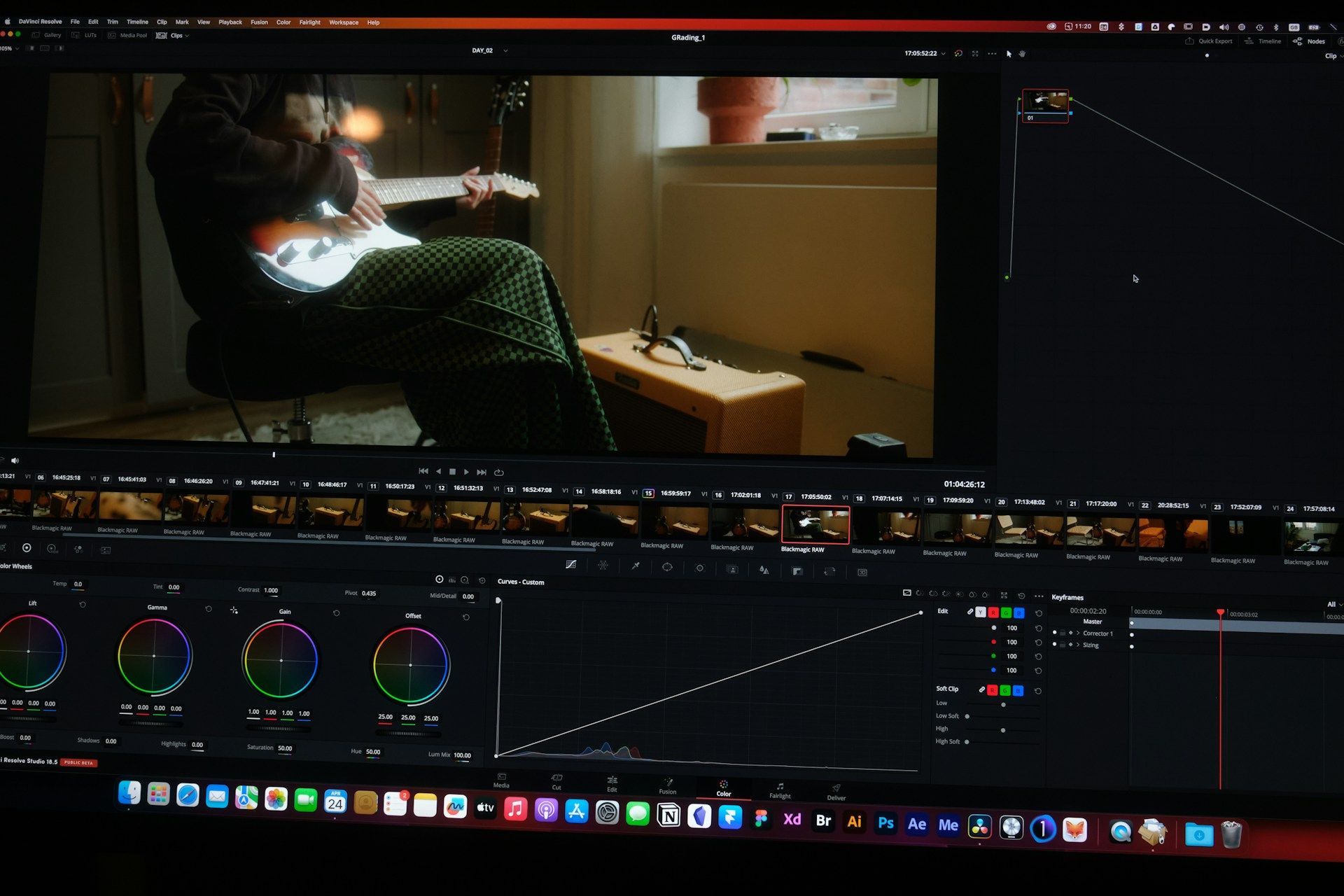Video Production Tips That Make A Difference
Video has grown into one of the clearest ways to tell a story and connect with people. Whether you're filming a quick product demo or a longer piece with a storyline, how your video looks and sounds can seriously impact how it's received. Viewers can usually tell when a video is planned out and professionally executed, and they're more likely to stay engaged when it feels polished. Great video work doesn't happen by accident. It comes from being thoughtful about each step, from prep work to the final edit.
Getting the most out of your video production doesn’t mean you have to start with all the latest gear or an expensive setup. What really makes a difference are the small things—being prepared before you shoot, knowing how to work with what you have, and understanding how to guide the viewer’s attention. Whether you're new to video or looking to sharpen your process, the right strategies can help your final product feel more clear, consistent, and watchable. Here's how to start building a better approach to video production that delivers real results.
Plan Your Production Ahead
Jumping into a shoot without a plan wastes time and creates a messy end product. The planning phase shapes your whole production by giving you clarity on what to shoot, when to shoot it, and why you're shooting it at all. You don’t need a fancy film degree for this part, just a little structure upfront can go a long way.
Here’s what helps during the planning process:
- Create a storyboard: A simple illustration or sketch of the key scenes. This keeps everyone aligned on the shots you need and helps spot issues early.
- Write a shot list: This is like your filming checklist. It tells you what to capture so you’re not scrambling when the camera’s rolling.
- Build a basic schedule: Think through your filming timeline. When is natural light best? Do you need to book a space? Who needs to be on set and when?
Let’s say you want to film a quick how-to video for a product. Without a plan, you might re-shoot the same parts over and over or forget to capture product close-ups entirely. But with just a few minutes of prep—storyboard, clear goals, and a simple timeline—you can move through filming smoother and make editing easier later.
Planning also reduces delays. If your camera dies halfway through or your location becomes unavailable, having a list and a schedule helps you pivot instead of panic. Getting things on paper, even loosely, keeps the project on track.
Optimize Your Equipment Use
Quality equipment helps, but knowing how to use what you already have is even more important. A well-framed shot with clear sound from a smartphone often beats a clumsy video from a high-end camera. It’s less about the price tag and more about how you handle the tools.
When choosing and using gear, start with these tips:
- Use natural light as much as you can. Shoot by a window or head outside when possible.
- Keep your camera steady by resting it on a table or using an affordable tripod.
- Make sure your audio is clean. Even a basic clip-on mic can make voices sound clearer.
- Learn your gear’s limits. Try filming short tests to understand what settings perform best in what lighting.
Editing can’t fix everything. If your footage is too dark or your audio too fuzzy, the final video won’t come out right. That’s why improving your use of basic tools is such a smart goal.
If you're on a tighter budget, aim to upgrade one element at a time. You might begin with better sound equipment like a lapel mic or a small light panel before diving into a more advanced camera. With good technique and a little creativity, simple gear can still deliver a professional feel.
Focus on Lighting and Sound
Great video quality heavily depends on how well you manage lighting and sound. Think about the last time you watched a movie or a show. Chances are, a lot of work went into making sure the lighting balanced perfectly with what was on screen, and the sound came through clean, without any annoying distractions. When you're shooting, it's no different. The way you approach lighting and capture sound can make or break your footage.
Start with some basic lighting setups:
- Key lighting: Use a strong light source placed in front of your subject to illuminate their face and reduce shadows.
- Fill lighting: To soften harsh shadows created by the key light, introduce a fill light from an angle.
- Backlighting: Position a light source behind your subject to create depth and separation from the background.
Adjusting these positions will change the mood and feel of your shot. Need an example? Think about a campfire scene where the glow makes faces look warm and inviting. Recreate this by positioning your lights to mimic that natural source. While professional lights are great, natural light is also your friend. Use it to your advantage by shooting during golden hours, just after sunrise or before sunset when light is softest.
Next, hone in on clear, crisp sound. Here, background noise becomes your main enemy. Nothing pulls a viewer out of your story faster than poor audio quality. Consider these tips:
- Use a directional microphone like a boom or shotgun mic for focused audio capture.
- Test recording levels before the main shoot. Adjust equipment to ensure voices are clear without distortion.
- Choose filming locations wisely to minimize echoes and reduce unwanted noise.
Staying mindful of both lighting and sound will pay off when it’s time to edit. Your raw footage will be more usable, and you won’t spend forever trying to fix issues that could have been prevented during shooting.
Post-Production Techniques
After all the filming’s done, your attention turns to post-production. This is where disparate clips transform into a cohesive piece of storytelling. You’ve got your footage, now it’s time to make it shine through editing.
Editing isn't just about putting clips together. It's where you shape the narrative, refine pacing, and add any additional elements that enhance your story. Here are some tips to keep in mind:
- Organize your footage: Sort through clips, marking the ones that are usable. Keeping everything in order saves time and helps keep the creative flow intact.
- Focus on pacing: Make sure your edits don't feel too fast or too slow. The rhythm of cuts impacts how your video communicates energy and emotion.
- Use transitions wisely: Overdoing transitions can distract viewers. Stick to basic cuts and dissolves for clarity and smoothness.
Also, consider adding background music or sound effects to enrich the audio landscape of your video. The wrong music can alter a scene's mood completely, so choose tracks carefully to fit the tone you’re aiming for.
Video editing software varies with options to fit all skill levels. Beginners might start with user-friendly tools like iMovie or Adobe Premiere Elements, while more advanced users may prefer the features found in Adobe Premiere Pro or Final Cut Pro. Picking the right software can impact both your efficiency and final output.
How to Build Stronger Video Content Every Time
Crafting a great video involves careful consideration at every stage. From planning and choosing the right gear to executing your shoot with an eye on lighting and sound, each decision impacts the final product. Post-production is where it all comes together. By focusing on good editing practices and making thoughtful selections for your soundtrack, your video will stand out for its professionalism and clarity.
Making videos might seem complicated, but breaking it down into manageable steps makes a world of difference. Listening to the needs of your project and always finding ways to improve what you’re working with can lead to remarkable results. Keep experimenting and refining your approach. Every video gives you an opportunity to improve. Keep building on these tips and you’ll find your videos becoming cleaner, more engaging, and a whole lot easier to produce.
Whether you're just starting out or already crafting impressive films, working with a film production company like Oddball Creative can bring your creative ideas to life with professional quality and storytelling expertise. Learn how we can support your video production and photography goals through services designed to match your vision and elevate your content.



